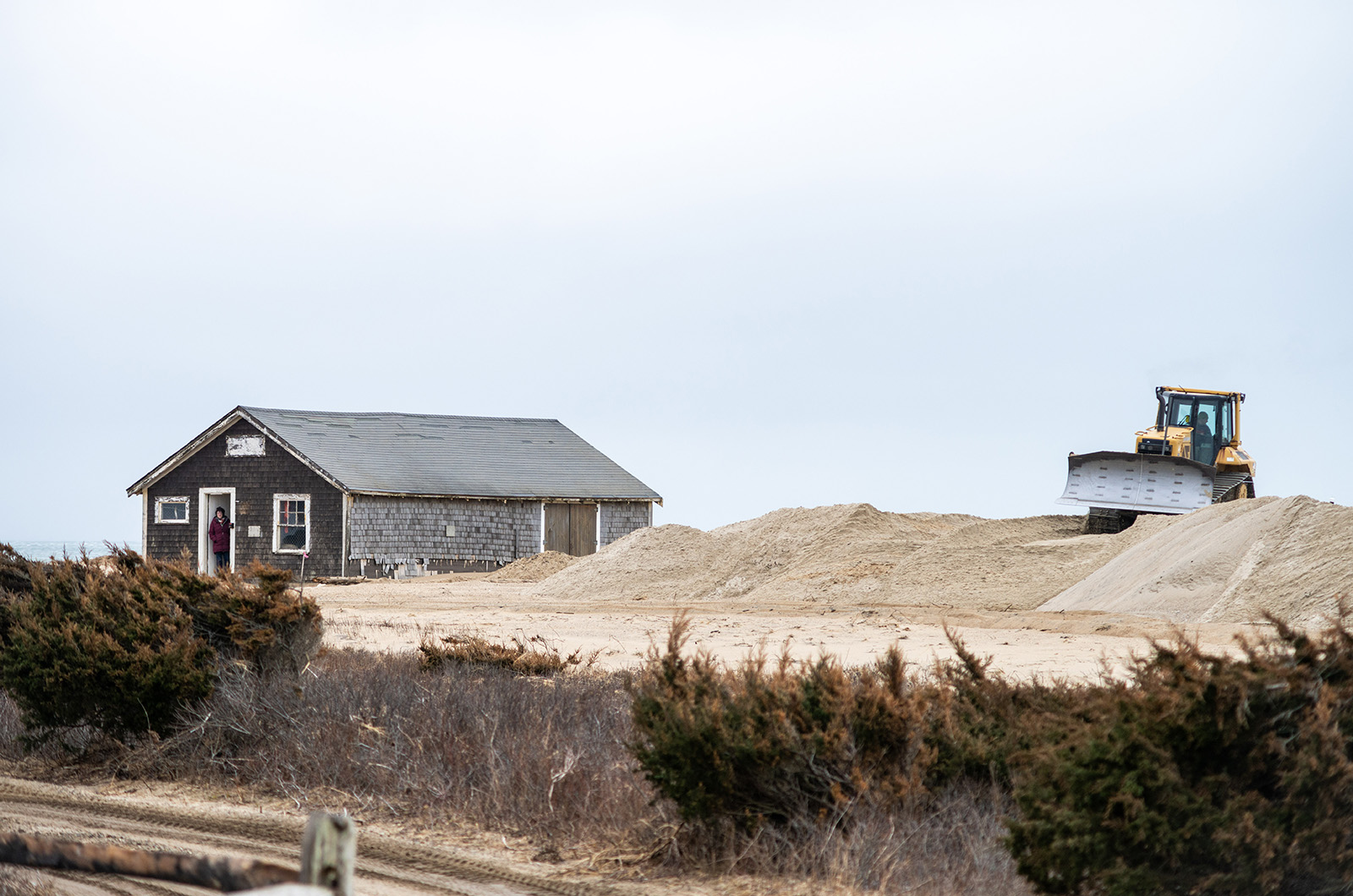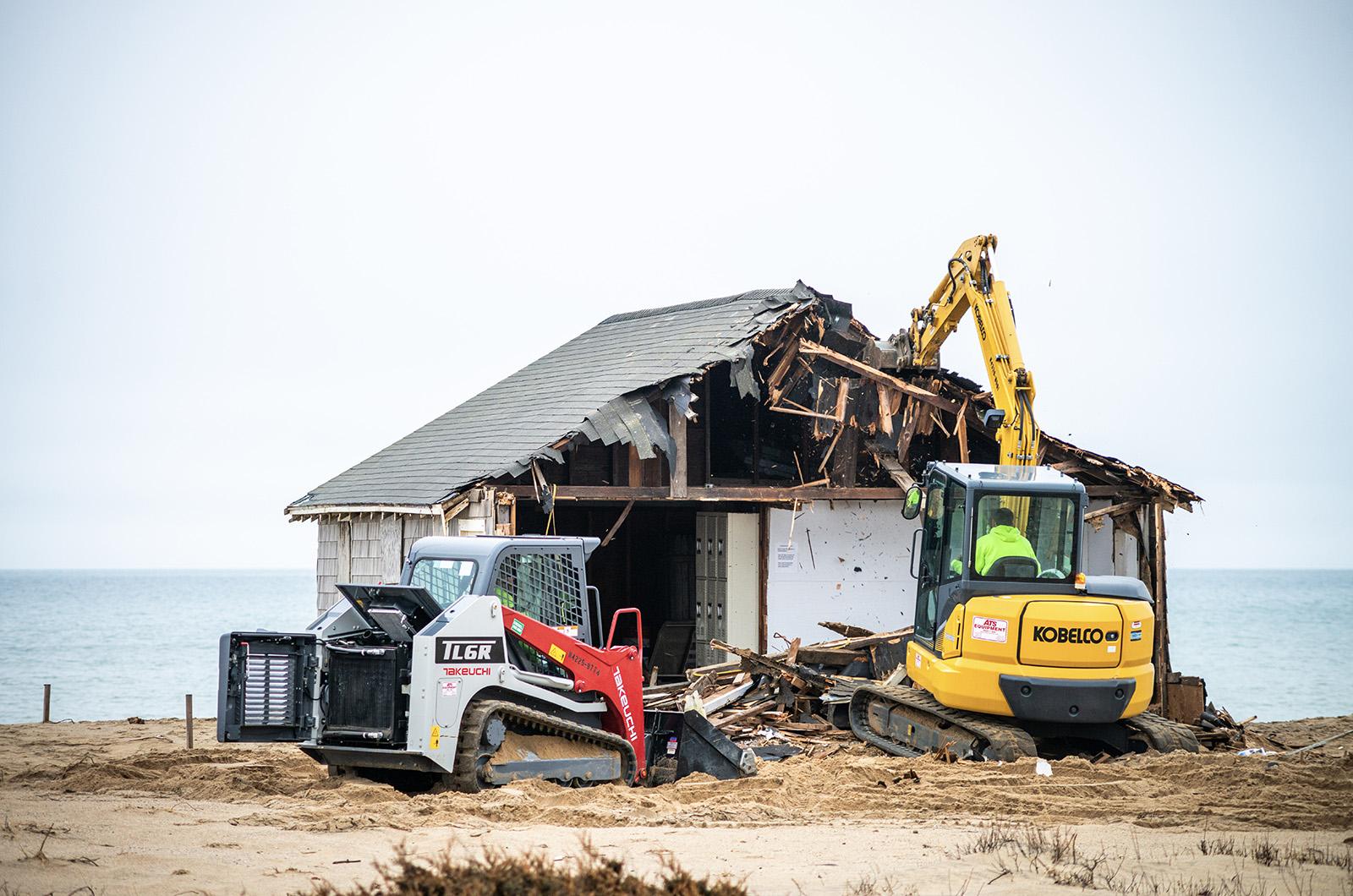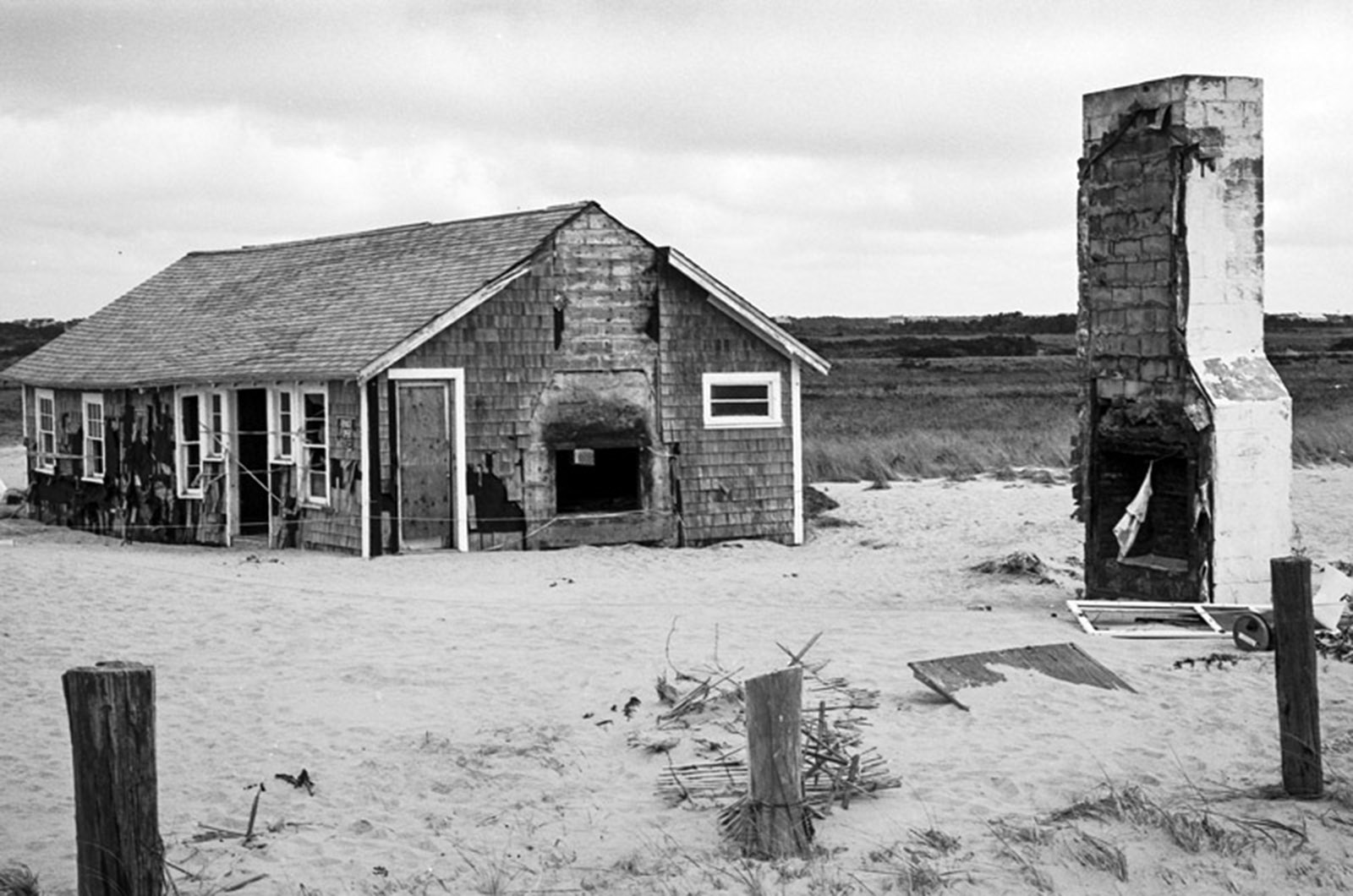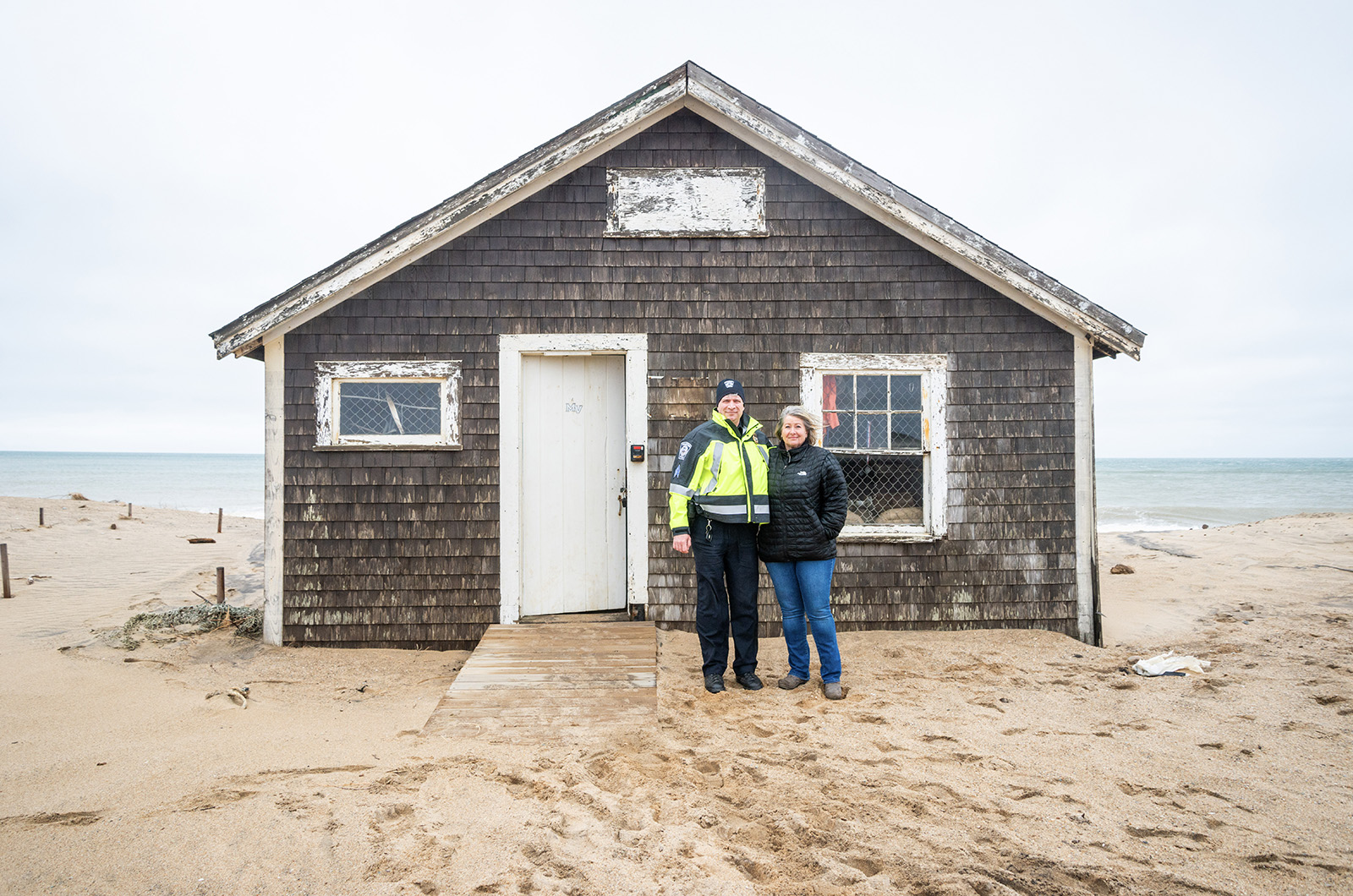The weight of time has taken its toll on South Beach.
The beach has eroded hundreds of yards over the years and the sea now threatens to overtake Atlantic Drive. A row of fishing shacks once lined the shoreline but earlier this week only one remained: the old Donnelly house, better known now as the lifeguard shack.

On Thursday, however, this last shack from an earlier time was demolished by state officials, another victim of storm-driven erosion and the ceaseless march of the sea. Shingles broken and white paint chipped, it has been battered by the elements for at least a century
“Honestly, we thought about moving it...but if we tried to pick it up it would just fall apart,” said Edgartown parks commissioner Andrew Kelly.
The demolition is just one aspect of a massive beach restoration project which has been ongoing at South Beach since this winter. The beach and Atlantic Drive area now resemble an extended construction zone, with yellow dump trucks depositing loads of sand up and down the shoreline to reconstruct its dunes.
“The reality is, we’ll probably have to put some more sand there next year,” Mr. Kelly said. “It’s Mother Nature you’re fighting. The seas are rising, there’s no getting around it.”
Still, keeping the beach and the road accessible remains a high priority for the town, Mr. Kelly said. South Beach is one of the most popular public beaches on Island and some private homes are only able to be accessed via entrances on Atlantic Drive.
But while dunes can be reconstructed, the Donnelly camp was beyond salvage, he said. Early cost estimates to replace it came in at around $400,000.
On Thursday, a group of family members and town officials gathered at the demolition site to reminisce about the building’s long history.
“Everyone’s kind of figuring this is around 100 years old,” said Joel DeRoche, whose grandfather John W. “Jack” Donnelly bought the camp in 1929. During the 1938 hurricane, he said, the building was dislodged from its foundation and ended up in nearby Herring Creek, but was later moved back in place.
“The first visitors to Jack Donnelly’s South Beach camp, while it was still afloat, found the living room badly upset,” the Gazette wrote, of the hurricane’s aftermath. “But the kitchen was still in order.”
The Donnelly house was one of the only Katama fishing camps to survive the 1938 storm. Swirling tropical winds and ocean swells rocked the Island that year, wiping out Hariph’s Creek Bridge, turning Aquinnah into an island and devastating the Menemsha waterfront. The impact in Katama, though, was strikingly similar to the fallout of this winter’s storms, with Donnelly house standing resolute again.
Mr. DeRoche said that during World War II the building was used to house navy sailors who were looking out for enemy submarines. Mr. DeRoche’s uncle moved into the building not long after.
“My father would tell you this was a very sociable place to come . . . there was always a nice cocktail waiting for you,” Mr. Kelly said.
After Mr. DeRoche’s uncle died in 1983, the state took the building by eminent domain, and it has since been used for the town lifeguard program. It is this later legacy that the building’s worn-down interior recalled in the days before the demolition. Old baseball caps and discarded sunglasses hung on the wall, along with various beach signs strewn about in the sand that washed in during the recent storms.
“We were in here every day,” recalled David Espindle, Edgartown beach director, who served as a town lifeguard in 2007.
“I had a lot of my friends call and text me because I recorded a video and sent it to a group of them,” he said. “It’s interesting, there’s different generations of people that have different styles and memories.”
Even after it was turned over to the state, the building was continually threatened by Island storms, said Edgartown conservation agent Jane Varkonda.
“[Hurricane] Bob picked it up and spun it around and tore the chimney off,” she said.
The decision to tear down the shack, though, highlights the cumulative impact of beach erosion, worsening storms on the Island and the indifference of natural forces to human designs.
There is reason for hope, though, Mr. Kelly said. The restoration of the beach is moving along, and the sea now shows signs of forming a new sandbar which could slow down erosion.
But ultimately, the future remains uncertain.
“Nature has its way, but the problem is, I don’t think us human beings are patient enough,” Mr. Kelly said. “What nature does takes a long, long time.”









Comments (10)
Comments
Comment policy »